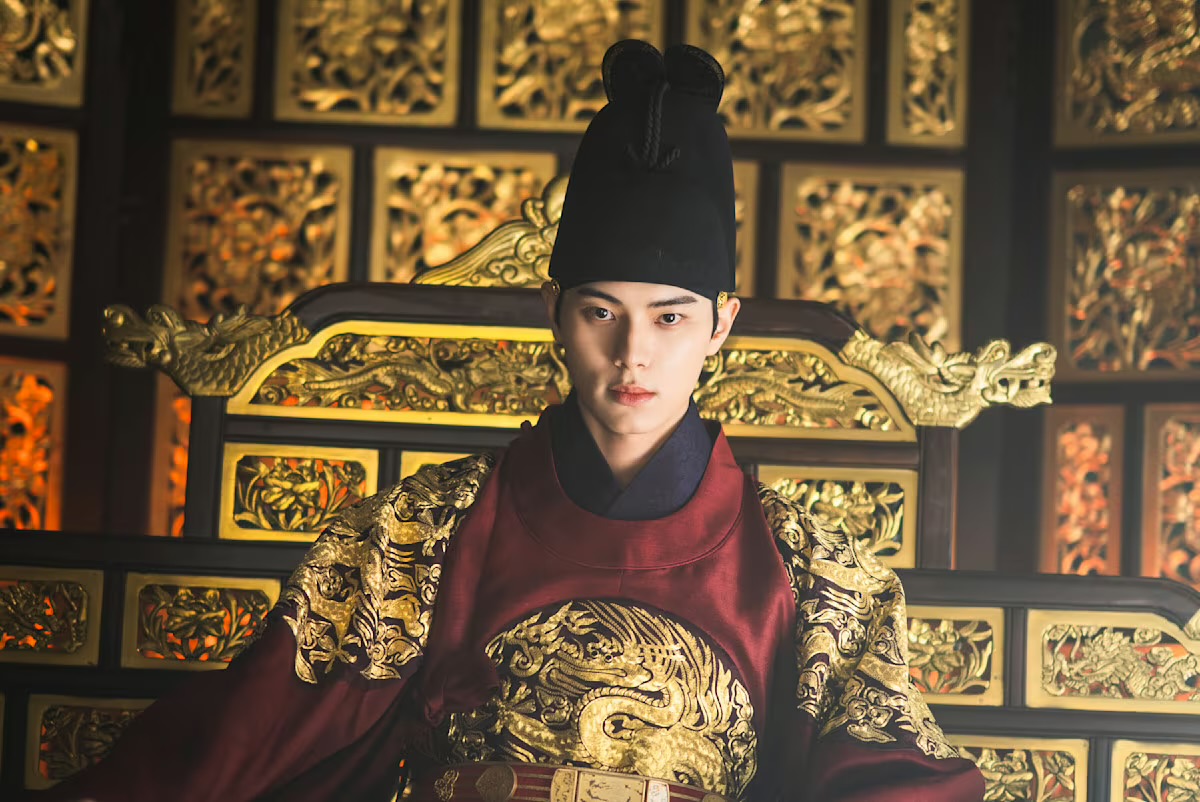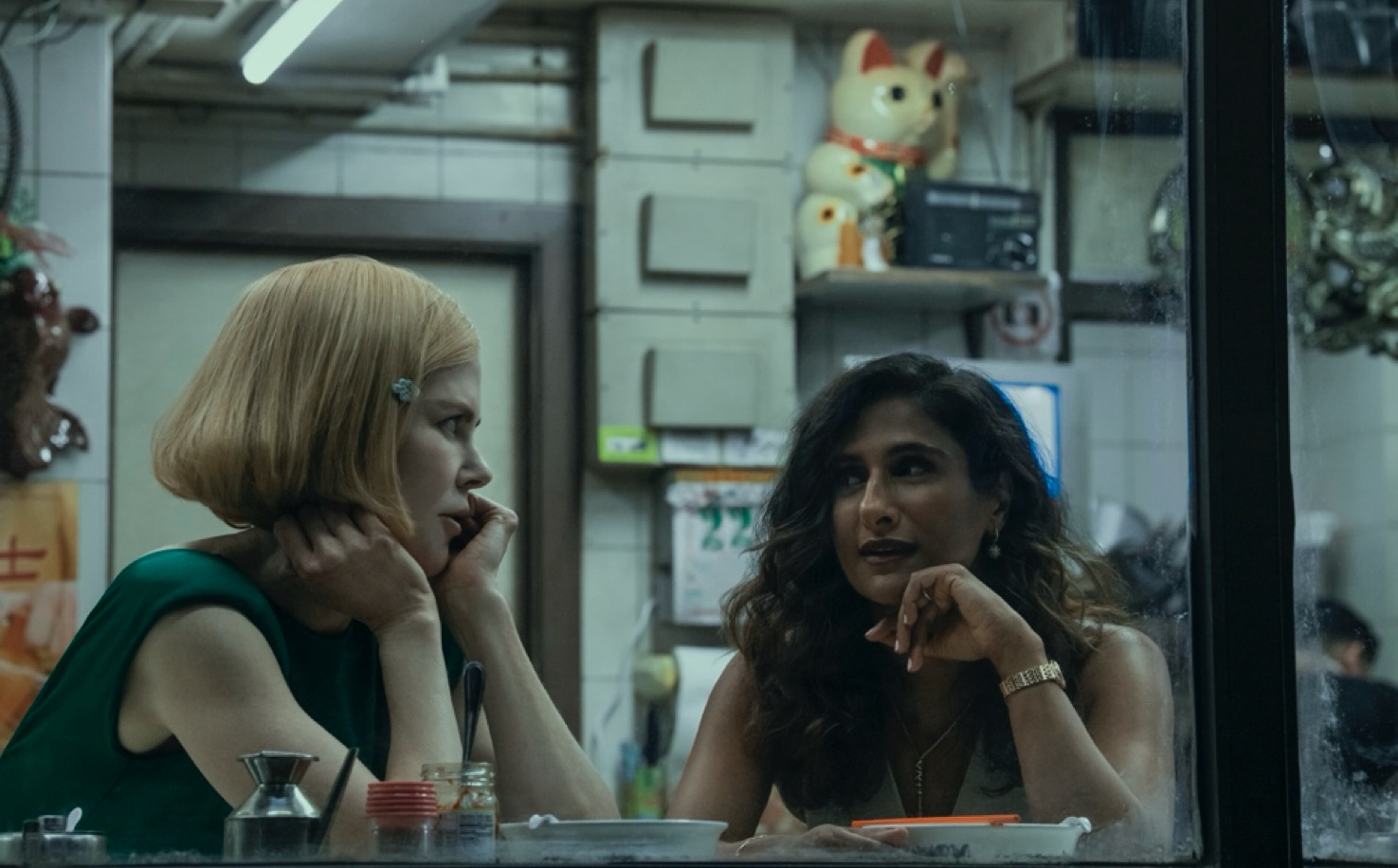First, you walk down a long corridor, like one you might see in an art gallery. A young Asian woman wearing a psychedelic black-and-white check mini-dress greets you. You put on a VR headset and she does the same. You enter another virtual space, one with no walls or floors, just an infinite beyond, streaked with panels of color, sparkling with light and shimmering with ephemeral shapes. An eerie soundtrack sweeps beneath you as you continue to explore different chambers themed according to the memories and emotions of the artist. You are inside “Grisaille,” the VR art installation of Teek Mach, which was featured as a part of the New Frontiers gallery at the 2019 Sundance Film Festival.
When you take off the VR headset, you realize you are sitting in a physical room in the artist’s apartment in Silver Lake, Los Angeles. Wearing the same black-and-white mini-dress, Mach is perched on her sofa and talking animatedly about Russian filmmakers and digital painting in isolation. There are neon lights snaked around on the floor, subtly illuminating the corners with streaks of pink and green. Every time she says something with emphasis, the motion-sensor activated trash can in the kitchen lifts its lid as if startled.
“I think there’s this disconnection with technology, and it’s always spoken about negatively, like millennials are constantly picked on for spending too much time on their cell phones and becoming too dependent on social media,” says Mach. “Which is kind of funny because I don’t use social media much. But I find myself extremely engaged with technology in a different way.”
Before Mach was born, her parents were trying to escape South Vietnam for several years before they finally made it to the U.S. in 1985. Mach, the youngest of four daughters, was born in Hibbing, Minnesota in 1986 and the only one with a Vietnamese name. “My sisters names are Kelly, Ashley and Lisa,” says Mach. “They got to choose their names when they came over here. Kelly and Lisa from ‘Saved by the Bell,’ and Ashley Banks from ‘The Fresh Prince of Bel Air.’ That’s how important TV was to becoming American.”

Her parents were extremely strict and enforced traditional Asian values on the girls. After school, they studied hard and Mach spent a lot of time drawing. “It felt like the only place I had control,” Mach says. “If I had a blank piece of paper, I could make it anything I wanted. Because my parents were so strict, it makes you creative in how to get what you want. And I feel like I exercised a lot of that creativity. Just working around those boundaries.”
Her father got a job doing metal bonding for aircraft in Texas and the family moved. She attended public school in a suburb of Dallas and was selected to be a part of the Gifted and Talented Education program. She never received a formal art education in those early days, but her friends, teachers and other parents noticed that she was artistic. Her friend’s mother gave Mach her first art book on French impressionism. “I remember falling in love with French impressionism, and just realizing, ‘Oh my god, there are people that do this. People draw.’ It was just something that wasn’t encouraged in my household,” Mach says. “Art wasn’t nourished. I had always been so transfixed with the power that paintings have. I really believe in the power of paintings—that’s what made me feel connected as a kid. Because I felt extremely disconnected, you know. Growing up in Texas as an Asian American, I didn’t see a lot of people like me.”
Mach’s sense of isolation was compounded by the fact that she and her parents spoke different languages. “I was learning English and Vietnamese at the same time, and it pushed me to be a visual person because I didn’t always know how to translate one from the other,” Mach says. “There was so much I could express in English that I couldn’t say in Vietnamese. So it sort of created the barrier with my parents, the people I should be the closest to.”

Then one day, Mach’s parents came to her installation and peered into the visions of her mind without the hindrance of language or words. “When I took my parents into VR for the first time, I felt like we were speaking the same language for the first time,” Mach says. “To me VR is a language that we’re deciphering. It’s a language in 3D. If you can think of all the ways artists throughout history have expressed themselves just in two dimensions with a flat surface, there’s literally a third dimension that we can play with now.”
Every single day of the nine-day film festival, for eleven hours a day, Mach performed “Grisaille,” which included not only the VR journey into the paintings of her mind, but also a second part, which involved her using a digital tool to sketch the viewer’s silhouette onto a projected screen on the wall, and then the silhouette is joined with others that she had drawn earlier.
“By drawing our silhouettes, it’s kind of marking our presence in the digital space,” Mach says. “Just like how cave dwellers trace their hands, I feel like we’re marking ourselves in the digital realm, by physically inserting our bodies into it. And ultimately, inside we’re all the same. We still experience the same things. We have feelings of isolation and the feeling that we’re not a part of something bigger, but we are ultimately at our core connected as a species.”







